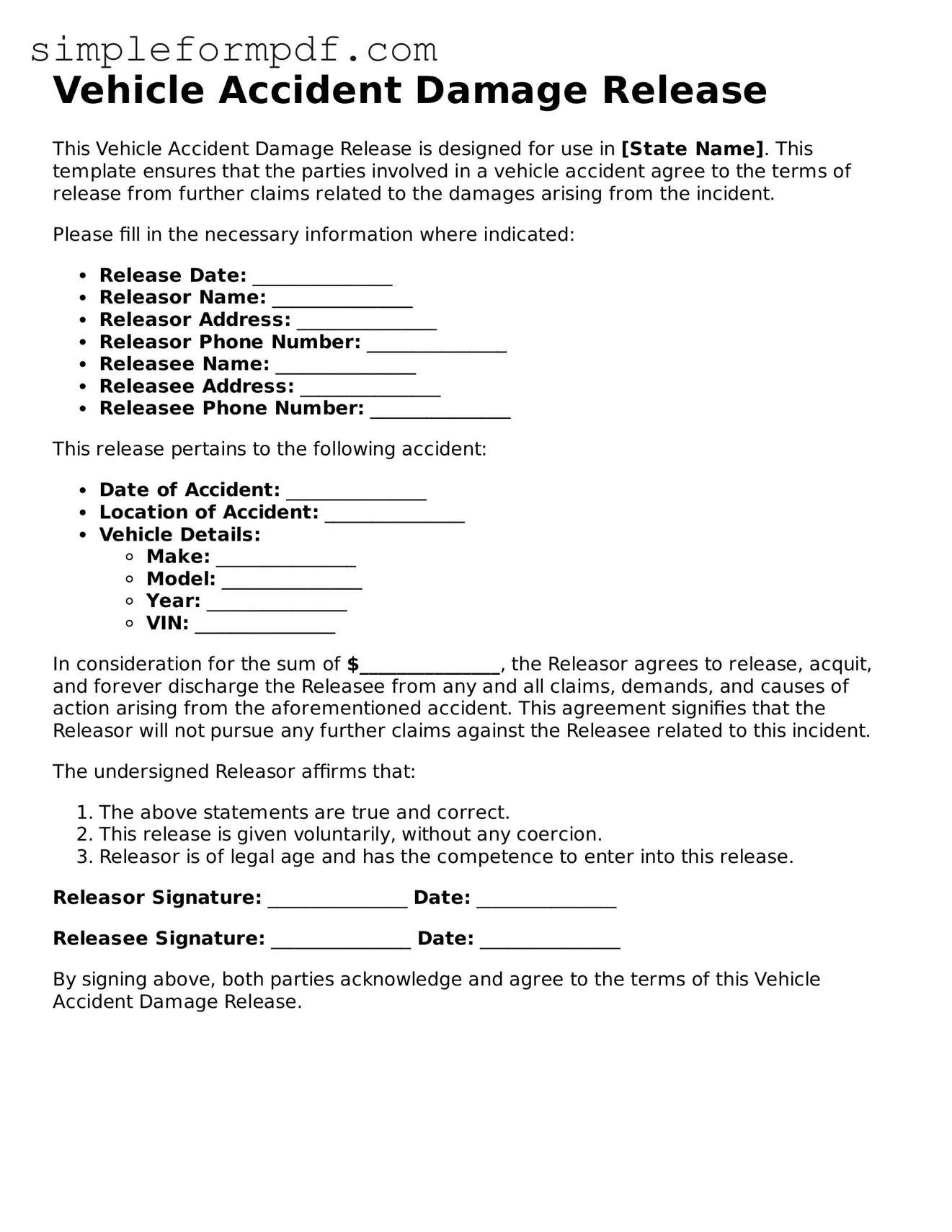Vehicle Accident Damage Release
This Vehicle Accident Damage Release is designed for use in [State Name]. This template ensures that the parties involved in a vehicle accident agree to the terms of release from further claims related to the damages arising from the incident.
Please fill in the necessary information where indicated:
- Release Date: _______________
- Releasor Name: _______________
- Releasor Address: _______________
- Releasor Phone Number: _______________
- Releasee Name: _______________
- Releasee Address: _______________
- Releasee Phone Number: _______________
This release pertains to the following accident:
- Date of Accident: _______________
- Location of Accident: _______________
- Vehicle Details:
- Make: _______________
- Model: _______________
- Year: _______________
- VIN: _______________
In consideration for the sum of $_______________, the Releasor agrees to release, acquit, and forever discharge the Releasee from any and all claims, demands, and causes of action arising from the aforementioned accident. This agreement signifies that the Releasor will not pursue any further claims against the Releasee related to this incident.
The undersigned Releasor affirms that:
- The above statements are true and correct.
- This release is given voluntarily, without any coercion.
- Releasor is of legal age and has the competence to enter into this release.
Releasor Signature: _______________ Date: _______________
Releasee Signature: _______________ Date: _______________
By signing above, both parties acknowledge and agree to the terms of this Vehicle Accident Damage Release.
